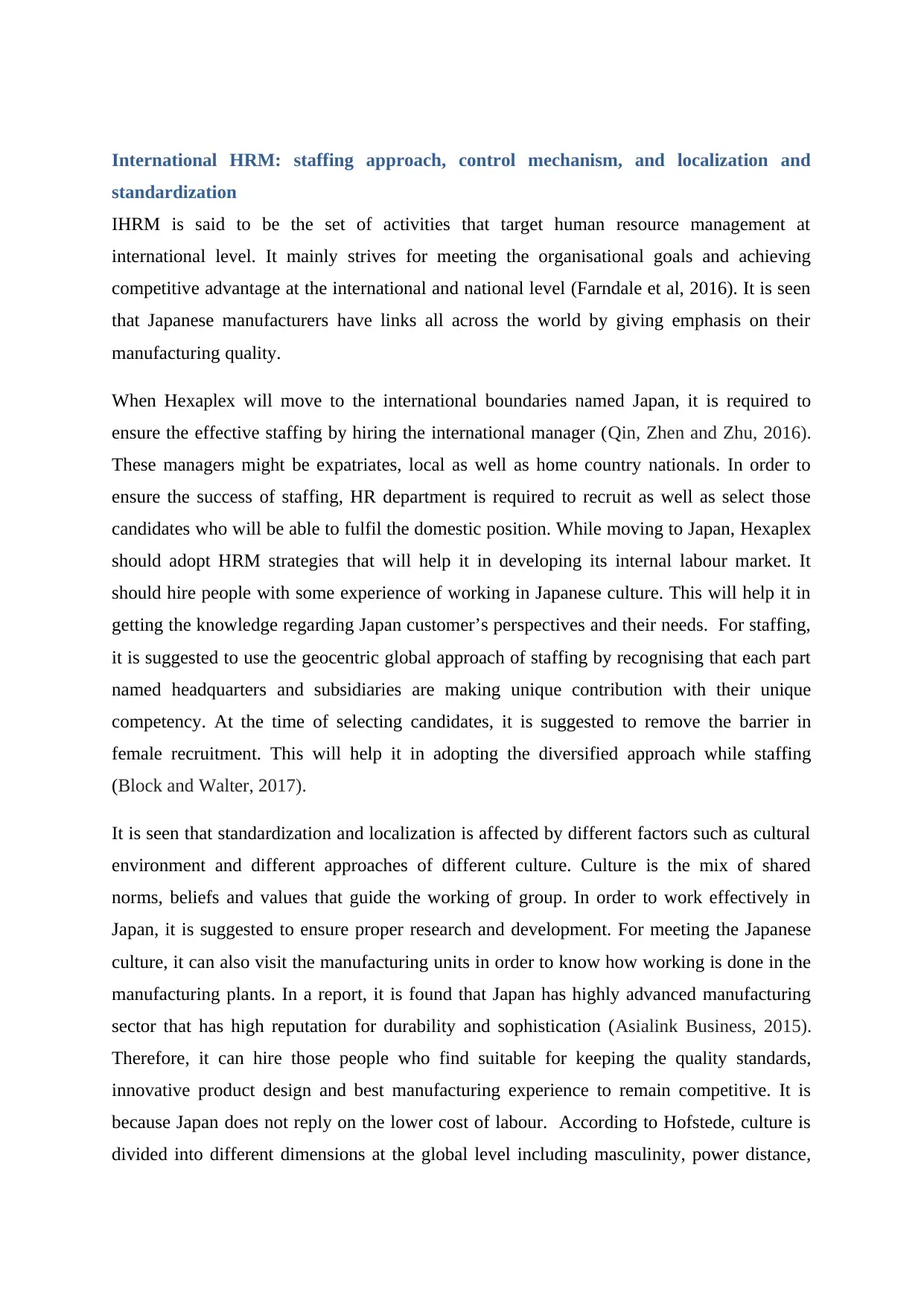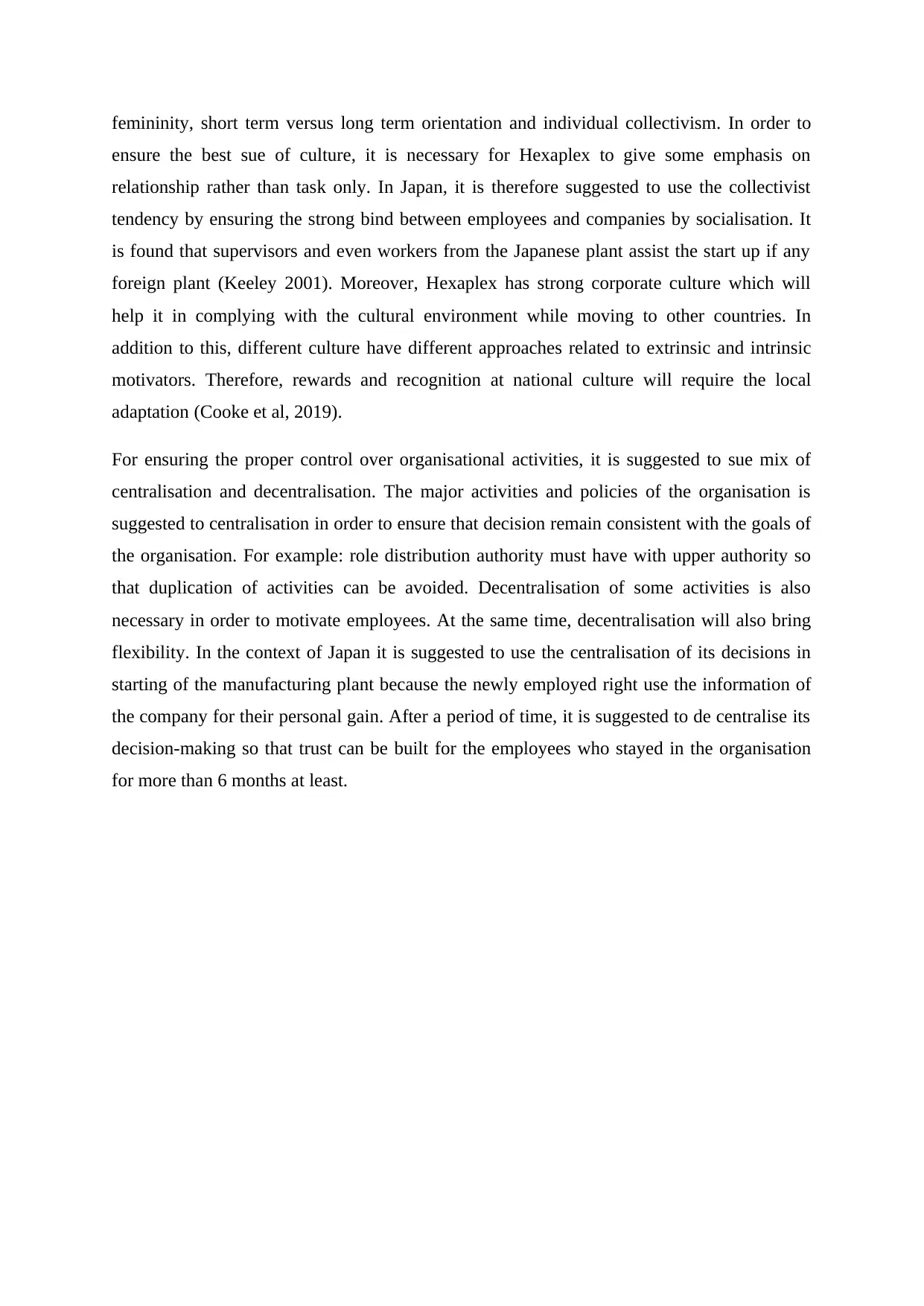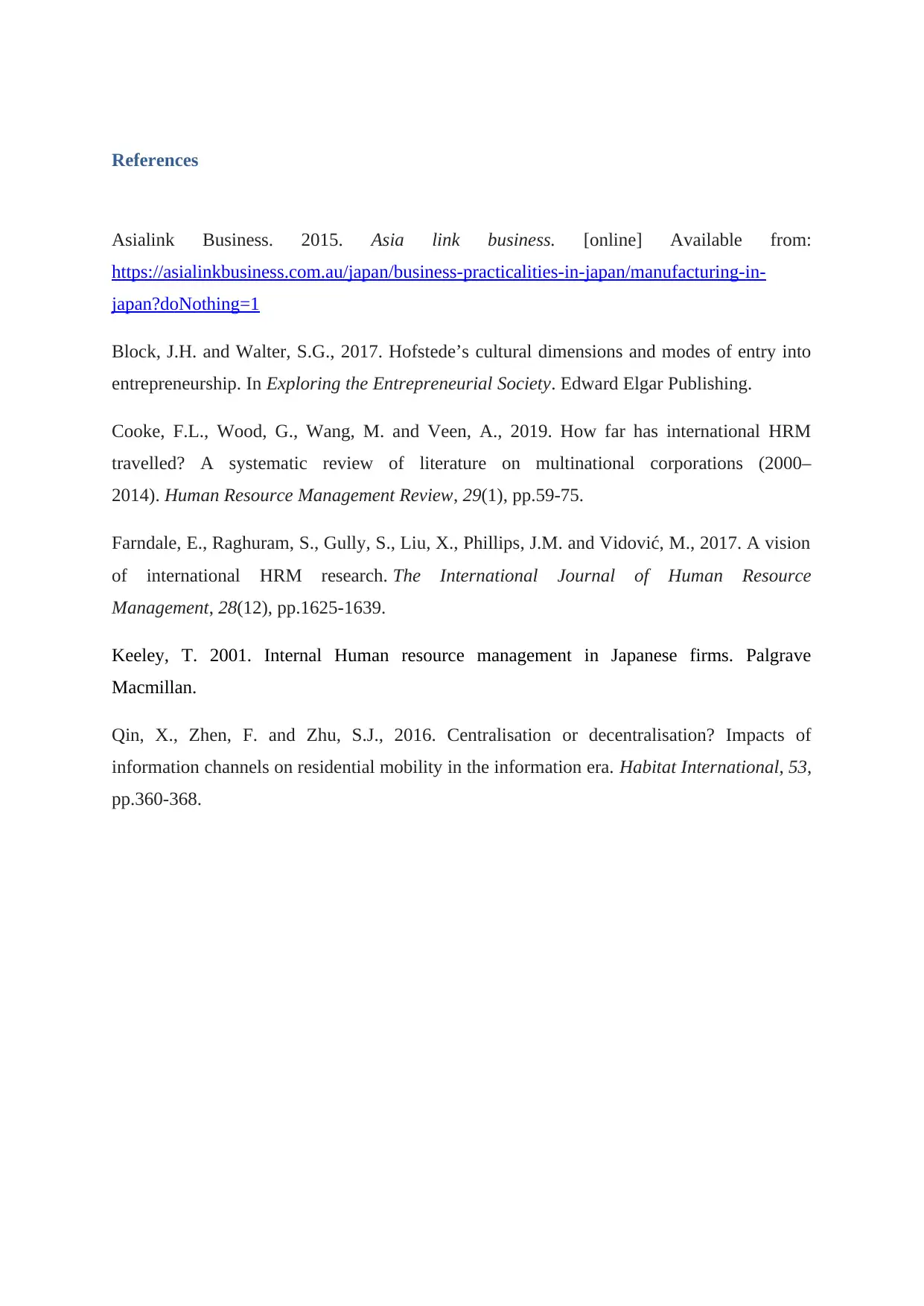Hexaplex's IHRM: Staffing, Control & Localization in Japan
VerifiedAdded on 2022/09/13
|4
|972
|10
Report
AI Summary
This report analyzes the international human resource management (IHRM) strategies Hexaplex, an Australian paint manufacturer, should adopt for establishing a manufacturing plant and operational unit in Japan. Drawing on IHRM theories, including cross-cultural theory, the report recommends a geocentric staffing approach, prioritizing ability over nationality, and emphasizes the importance of understanding Japanese culture. It suggests hiring individuals with experience in the Japanese market to gain insights into customer needs. For control mechanisms, a mix of centralization and decentralization is proposed, with centralized decision-making initially to maintain consistency, followed by decentralization to foster employee trust and flexibility. The report also addresses factors driving standardization and localization, highlighting the influence of cultural and institutional environments. It emphasizes the need for proper research and development to align with Japanese cultural norms, focusing on relationship-building and collectivist tendencies. The report also underscores the importance of adapting reward and recognition initiatives to the local culture. Furthermore, the report extends the discussion by incorporating additional IHRM theories, such as Hofstede's cultural dimensions, to provide a more comprehensive understanding of the cultural nuances that Hexaplex must consider. The report concludes by re-emphasizing the need for a localized approach to HRM practices in Japan, including staffing, control mechanisms, and the balance between standardization and localization to ensure the success of Hexaplex's expansion in the Japanese market. This includes a more in-depth consideration of Japanese work culture, including the importance of teamwork, consensus-building, and long-term relationships. The report also stresses the significance of training and development programs tailored to the Japanese context, incorporating elements of both formal and informal learning to facilitate cultural integration and enhance employee performance.
1 out of 4










![[object Object]](/_next/static/media/star-bottom.7253800d.svg)